Eucalyptus Tree
- November 9, 2023
- 0 comment
The Eucalyptus tree, native to Australia, is a diverse genus comprising over 700 species known for its distinct aromatic leaves and tall, slender silhouette. Renowned for its adaptability, the Eucalyptus has found a home in various climates around the world.

The bark of these trees often peels away in ribbons, revealing a smooth, sometimes colorful trunk underneath. One of its notable features is the oil glands in the leaves, which release a characteristic scent, making it a popular choice for essential oils.

Eucalyptus trees are also valued for their rapid growth and ability to absorb large amounts of water, making them effective in combating soil erosion. Additionally, they are utilized in timber production, yielding a durable wood often employed in construction and crafting. Beyond its practical uses, the Eucalyptus tree holds cultural significance, featuring prominently in Aboriginal Australian traditions and earning its place as an iconic symbol of resilience and versatility in the botanical world.
| Characteristics | Description |
| Scientific Name | Eucalyptus spp. |
| Family | Myrtaceae |
| Native Region | Australia |
| Number of Species | Over 700 |
| Height | Varies, typically tall with a slender silhouette |
| Bark | Peeling in ribbons, revealing smooth trunk |
| Leaves | Aromatic, oil glands present |
| Growth Rate | Rapid |
| Environmental Role | Effective in combating soil erosion, absorbs large amounts of water |
| Uses | Essential oil production, timber for construction, cultural significance |
| Cultural Significance | Important in Aboriginal Australian traditions |
Botanical Beauty of Eucalyptus Tree
The Eucalyptus Tree, a botanical marvel native to Australia, captivates with its unique beauty. With over 700 species, each one possesses a distinctive charm. These trees are characterized by their tall, slender trunks and the fascinating peeling of bark in ribbons, revealing a smooth and often colorful surface underneath. The leaves, rich in aromatic oils, contribute to the tree’s allure, making it a standout in the botanical world.
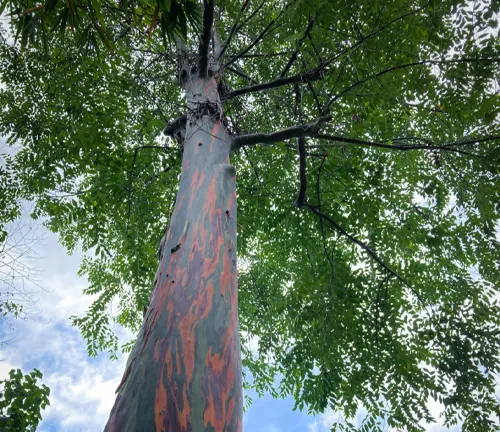
Woodland Elegance

Beyond its aesthetic appeal, the Eucalyptus tree boasts practical elegance in the realm of wood. The timber produced by these trees is known for its durability and versatility. Used in construction and various crafting endeavors, Eucalyptus wood combines strength with an appealing grain, embodying a perfect harmony of form and function.
Ecological Importance


The ecological significance of Eucalyptus trees cannot be overstated. Known for their rapid growth and ability to absorb substantial amounts of water, they play a vital role in combating soil erosion. Their extensive root systems contribute to stabilizing the soil, making them environmental heroes in regions prone to erosion.
Cultivation and Conservation
Cultivating and conserving Eucalyptus trees is a delicate balance. While these trees thrive in diverse climates worldwide, conservation efforts are essential to preserve the unique genetic diversity within the genus. Careful cultivation practices ensure that the Eucalyptus tree continues to adapt and contribute to ecosystems globally.

Fragrance
The enchanting fragrance emitted by Eucalyptus leaves is one of nature’s olfactory delights. The oil glands within the leaves release a distinct scent, contributing to the tree’s aromatic charm. This aromatic quality extends the tree’s allure beyond its visual appeal, making it a popular choice for essential oil production.
Soil Stabilization

Eucalyptus trees are unsung heroes in soil stabilization. Their extensive root systems help bind the soil, preventing erosion and promoting overall soil health. This critical ecological function enhances the tree’s reputation as a valuable contributor to environmental sustainability.
Common Uses
In addition to its ecological and aesthetic contributions, the Eucalyptus tree serves various practical purposes. From essential oil production to timber used in construction, furniture, and crafting, the versatility of Eucalyptus extends into many facets of human life. Its utilitarian value, combined with its natural beauty, makes it a tree of multiple dimensions.

Benefits
The benefits of the Eucalyptus tree are manifold. Beyond its visual and aromatic appeal, it offers ecological stability, sustainable wood resources, and cultural significance. As a resilient and adaptable species, the Eucalyptus tree stands as a testament to nature’s ingenuity and its ability to provide both beauty and practicality in abundance.
Different Species
Eucalyptus globulus
Also known as the Tasmanian blue gum, it is one of the most widely planted Eucalyptus species globally, valued for its timber and oil production.


Eucalyptus grandis
Commonly referred to as the flooded gum, it is a tall tree native to Australia, known for its straight trunk and smooth bark.
Eucalyptus camaldulensis
Known as the river red gum, this species is often found along riverbanks and is prized for its timber and shade.


Eucalyptus deglupta
The rainbow eucalyptus is famous for its multicolored bark, displaying hues of blue, purple, orange, and maroon as it ages.
Eucalyptus citriodora
Also called the lemon-scented gum, it is recognized for its strong lemon fragrance and is commonly used in essential oil production.
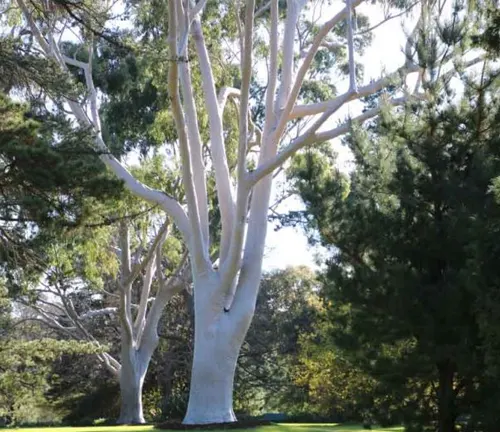
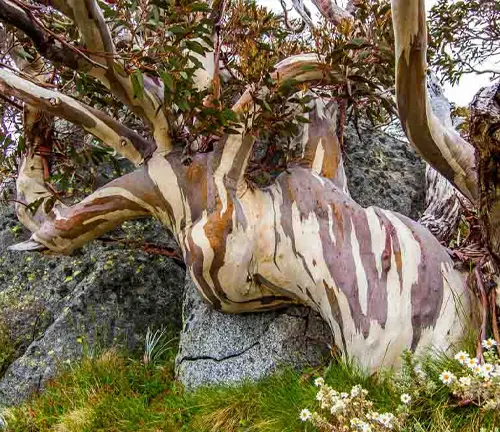
Eucalyptus pauciflora
Snow gum, native to southeastern Australia, is known for its mottled bark and ability to withstand cold temperatures.
Eucalyptus sideroxylon
Red ironbark is valued for its hard, durable timber and distinctive dark red to black bark.
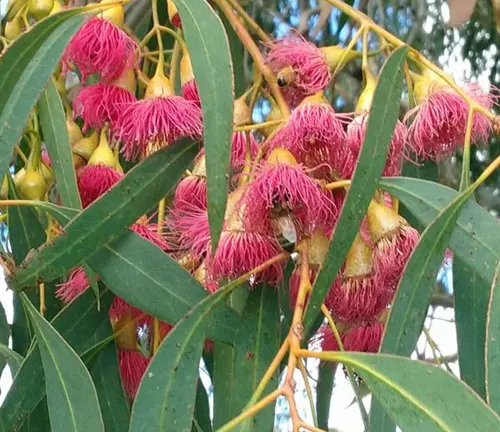
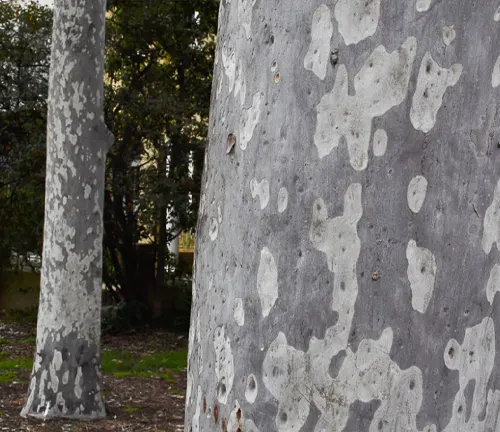
Eucalyptus maculata
Spotted gum is a popular timber tree in Australia, named for the distinctive spots on its smooth, cream to grey bark.
Eucalyptus cinerea
Silver dollar gum is recognized for its unique round, silvery-blue juvenile leaves, often used in floral arrangements.
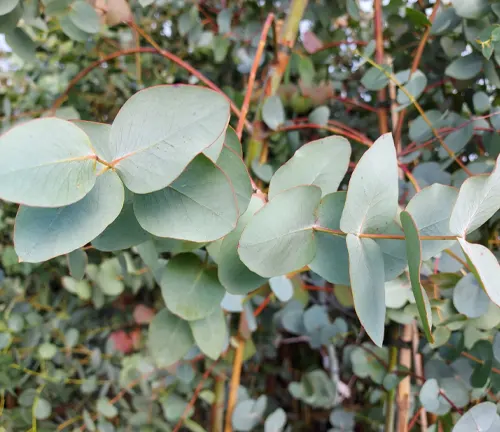
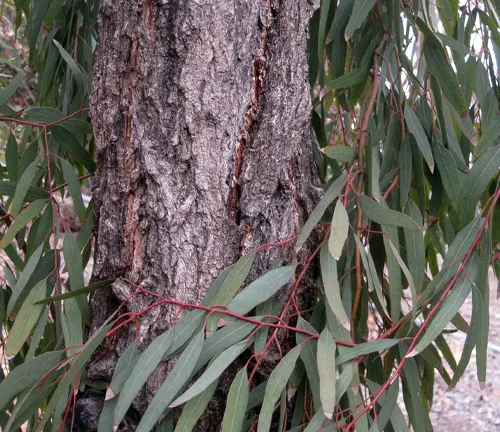
Eucalyptus nicholii
Also known as the narrow-leaved black peppermint, it is prized for its weeping foliage and aromatic oil.
Frequently Asked Questions (FAQs)
- Are Eucalyptus trees only found in Australia?
While native to Australia, Eucalyptus trees have been successfully introduced and cultivated in various climates around the world. - What is the distinctive smell associated with Eucalyptus trees?
The aromatic scent is due to the oil glands in the leaves that release a unique fragrance, often described as medicinal or refreshing. - Can Eucalyptus trees be grown outside of their native habitat?
Yes, many Eucalyptus species are adaptable and can be grown in different climates, although specific care may be needed to ensure their well-being. - Are all Eucalyptus trees tall with a slender trunk?
While many Eucalyptus species exhibit this characteristic, there is variation in height, trunk shape, and bark type among different species. - What is the significance of Eucalyptus trees in Aboriginal Australian traditions?
Eucalyptus trees hold cultural importance, often symbolizing resilience and versatility in Aboriginal Australian folklore. - Do Eucalyptus trees help in soil stabilization?
Yes, Eucalyptus trees are known for their extensive root systems, which aid in soil stabilization, preventing erosion. - Can Eucalyptus wood be used for construction?
Absolutely, Eucalyptus timber is valued for its strength and versatility, commonly used in construction, furniture, and crafting. - What are the common uses of Eucalyptus essential oil?
Eucalyptus oil is widely used for its antiseptic and aromatic properties. It is found in various products, from medicinal ointments to aromatherapy. - How fast do Eucalyptus trees grow?
Eucalyptus trees are known for their rapid growth, making them valuable for timber production and environmental purposes. - Are there any conservation concerns regarding Eucalyptus trees?
Conservation efforts are essential to maintain genetic diversity within the Eucalyptus genus and ensure the sustainability of these trees in various ecosystems.





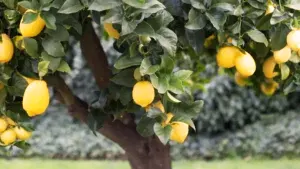
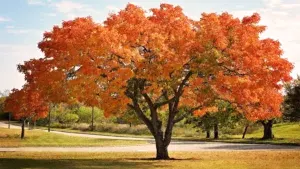


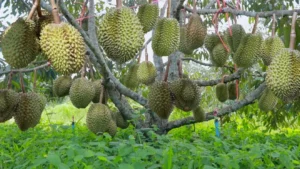



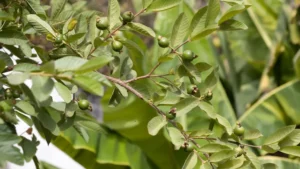
Leave your comment